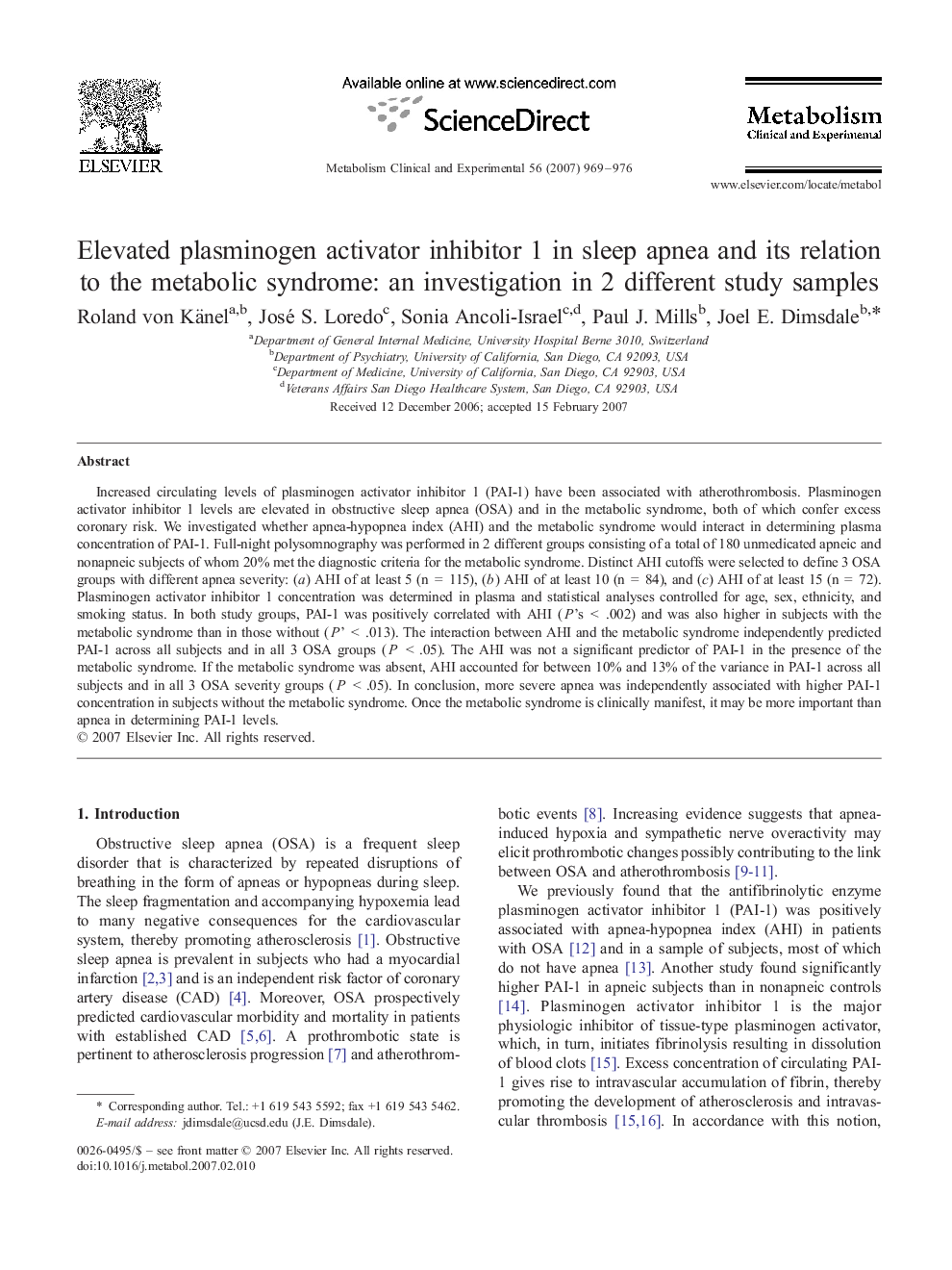| Article ID | Journal | Published Year | Pages | File Type |
|---|---|---|---|---|
| 2807773 | Metabolism | 2007 | 8 Pages |
Increased circulating levels of plasminogen activator inhibitor 1 (PAI-1) have been associated with atherothrombosis. Plasminogen activator inhibitor 1 levels are elevated in obstructive sleep apnea (OSA) and in the metabolic syndrome, both of which confer excess coronary risk. We investigated whether apnea-hypopnea index (AHI) and the metabolic syndrome would interact in determining plasma concentration of PAI-1. Full-night polysomnography was performed in 2 different groups consisting of a total of 180 unmedicated apneic and nonapneic subjects of whom 20% met the diagnostic criteria for the metabolic syndrome. Distinct AHI cutoffs were selected to define 3 OSA groups with different apnea severity: (a) AHI of at least 5 (n = 115), (b) AHI of at least 10 (n = 84), and (c) AHI of at least 15 (n = 72). Plasminogen activator inhibitor 1 concentration was determined in plasma and statistical analyses controlled for age, sex, ethnicity, and smoking status. In both study groups, PAI-1 was positively correlated with AHI (P's < .002) and was also higher in subjects with the metabolic syndrome than in those without (P' < .013). The interaction between AHI and the metabolic syndrome independently predicted PAI-1 across all subjects and in all 3 OSA groups (P < .05). The AHI was not a significant predictor of PAI-1 in the presence of the metabolic syndrome. If the metabolic syndrome was absent, AHI accounted for between 10% and 13% of the variance in PAI-1 across all subjects and in all 3 OSA severity groups (P < .05). In conclusion, more severe apnea was independently associated with higher PAI-1 concentration in subjects without the metabolic syndrome. Once the metabolic syndrome is clinically manifest, it may be more important than apnea in determining PAI-1 levels.
